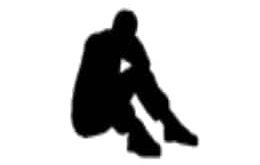In this video, Dr. Courtney Harrington will briefly explain how to read and understand a DNA Paternity Test result. If you would like to read the full transcript instead of watching the above video. Check out the transcript below.
How to read a DNA Paternity Test result?
DNA can also be used in paternity testing and this utilizes short tandem repeat sections of the DNA. Where DNA repeats, for example, a CAG a CAG a CAG and so on and the repeats at each loci are counted and then that’s used in a matrix to determine whether or not someone could be the father of a child. So let’s just walk through this example of two alleged fathers a mother and a child to determine whether or not one of these fathers is the father. And, which one it is the mother at one particular loci has one fragment of 28 repeats and one of 30. The child has 28 and 31.
The first father has 29 and 31 and the second alleged father has 28 and 31. So the child could only have received the 28 from its mother because it doesn’t have 30 and so either one of the alleged fathers could have contributed the child’s 31 repeat gene so this first locus doesn’t rule out either of the alleged fathers. So we look at the second Lucus. The mother is 9 and 10 the child is 10 and 11. The alleged father one is 6 and 10 and alleged father 2 is 11 and 12 the 10 that the child has, has to have come from the mother so this father can’t have contributed the 10 that had to have come from the mother because it’s the only one of the mothers’ alleles that the child has. So, at this locus alleged father, one couldn’t have contributed any of the child’s genetic material so we know at this locus we can rule out alleged father 1.
Alleged father two could have contributed it’s 11 alleles to the child when we look at this third locus mother is 14, 15. The child is 14,16 so the child had to have gotten it’s 14 alleles from its mother and so we’re looking to find out where the 16 alleles could have come from again. Alleged father 1 is ruled out by alleged father two because he does have a 16 allele and could have contributed that in the fourth locus. We see the seven coming from the child’s mother and the nine could have come from either of these two alleged father’s but since we’ve already ruled out alleged father one we know now that we’re just still in the running with the alleged father two 14, 16 for the fifth locus 14, 15 for the child.
So 14 had to have come from the mother and 15 could have come from alleged father two. So based on these five loci that we’ve looked at alleged father 1 was ruled out by several loci and alleged father two matches all the loci we were looking at. So alleged father two could possibly be this child’s father.

